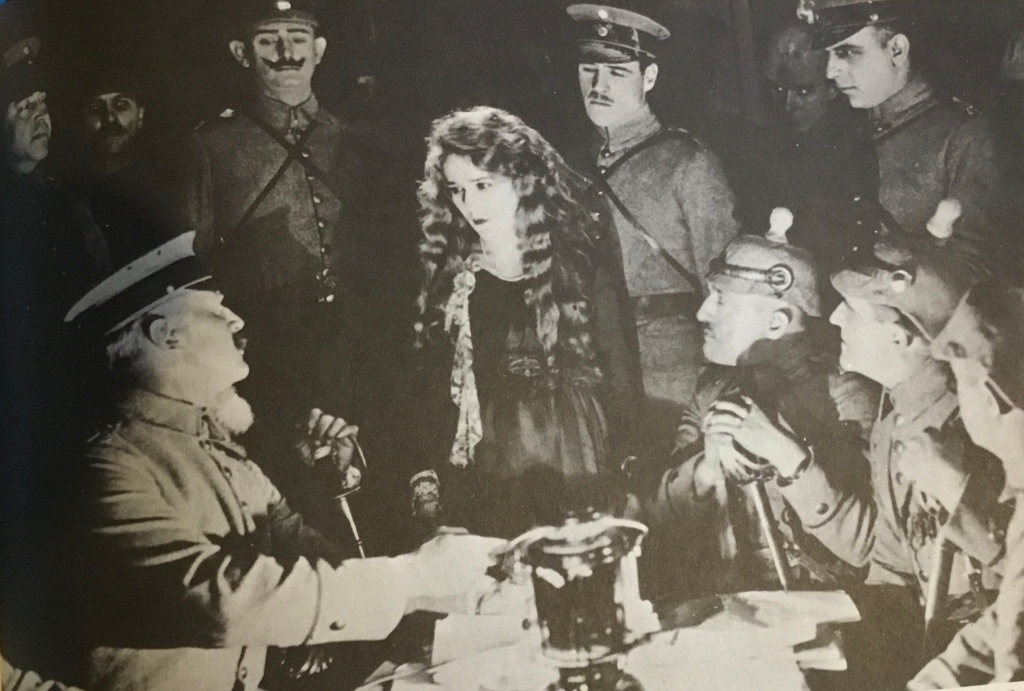The Movies: A History
The Nickelodeon
In 1902, Thomas Lincoln Tally opened the Electric Theatre in Los Angeles, for “Up-to-Date High-Class Motion Picture Entertainment Especially for Ladies and Children.” His creation was replicated around the world, including in my home country, Wales – the picture shows Robert Dooner’s fairground in south Wales.
Tally was active in other aspects of motion pictures. Indeed, he was the first person to sign Charlie Chaplin and Mary Pickford to movie contracts.

The Great Train Robbery was one of the first movies to tell a story, in this case the tale of four bandits who rob a train and its passengers of their valuables, then try to escape. The movie concluded, for no reason associated with the story, with one of the outlaws (pictured) firing a gun at the audience.

From the start, filmmakers clashed with censors and various strands of public opinion. D.W. Griffith inserted this notice as a foreword to his controversial movie The Birth of a Nation.

Initially, movie studios refused to credit their actors and actresses for fear that they would become popular and demand more money. The independent moviemakers, aware that the public were keen to place names to their favourite players, gave credits and thus attracted fresh talent. The movie star, like Florence Lawrence, was born.

One early filmmaking idea was to create motion pictures out of stage-plays. Adolph Zukor’s ‘Famous Players in Famous Plays’ was one such example. It didn’t work. Despite attracting big names to appear in the movie-plays, the audience was not impressed.

📸 The introduction to The Good Little Devil. Author David Belasco ponders his play while the ghosts of his characters appear in double exposure. The ‘ghost’ in the white dress is Mary Pickford in her first feature-length film. She appeared in the 1913 Broadway play.

Early motion pictures were based on “The Movie Family” – The Hero, The Heroine, Mother, The Villain and The Vamp. Mary Pickford (pictured) typified The Heroine – sweet, pure and usually dressed in white. Her intelligence, or lack of it, was immaterial. The Hero was strong, noble and generous. Unlike The Heroine, The Hero could be tempted by sin, as long as he didn’t succumb to it.
The Mother was a grey-haired martyr who exemplified self-sacrifice. The Villain usually the embodiment of the audience’s prejudices, was allowed to have a rip-roaring time – as long as someone shot him in the end. The Vamp was the femme fatale who ruined men. The formula worked, until moviemaking and audiences became more sophisticated.

When the First World War broke out, the movies were unsure how to approach the subject, with pacifist and ‘Keep America out of the War’ voices strongly to the fore. However, the Committee on Public Information created a Division of Films “to sell the war to America.”
In The Little American, 1917, directed by Cecil B. DeMille, Mary Pickford’s character, Angela, an American woman, is in love with both a German soldier and a French soldier. Spoiler alert: after visiting France and being caught up in the war, Angela returns to America with the German soldier.

After the First World War, movie palaces, as much as the movies themselves, attracted the middle classes. Subsequently, movies were made to satisfy this audience. One of the grandest movie palaces was The Roxy Theatre in New York, “The Cathedral of the Motion Picture”, which opened on March 11, 1927 with the silent film The Love of Sunya starring Gloria Swanson.
